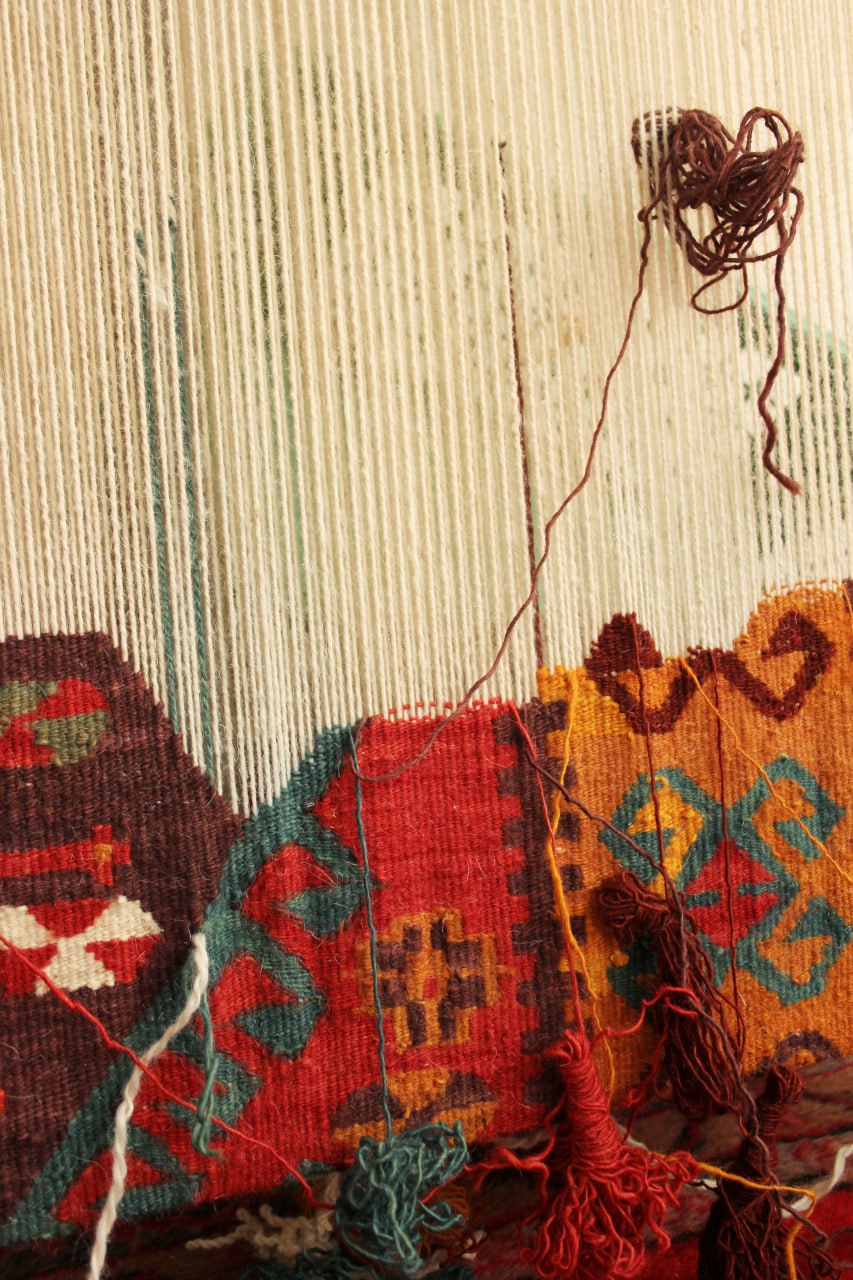
Kazakh tufted and lint-free carpet weaving
Until mid-20th century Kyzylorda region was one of the main centres of traditional Kazakh carpet weaving was Kyzylorda region was one of the main centres of traditional Kazakh carpet weaving. Its historical name is Syrdarya region (the traditional name of the Syrdarya river basin is Syr öñiri). This toponym is associated with the common folk name for the region’s pile carpets – Syr kilemi (the Syr Darya carpet). Researchers report about the existence of such type of carpet in the past as koñyratkilem (carpet woven by koñyrat family on Syrdarya river). The Kazakh koñyrat clan is traditionally settled in the middle reaches of the Syr Darya River (Kyzylorda and Turkestan regions).
Today, the Kyzylorda population uses more national names for pile carpets – qaly kilem (expensive carpet) or tükti kilem (carpet with pile). Both of these types of carpets have high pile. At present time carpets are woven from pre-fabricated threads and the preparation of raw materials for weaving (making and dyeing wool yarn as well as using natural dyes for dyeing yarn) is not practiced, which in general is a serious threat to the viability of authentic carpet weaving. In general, today there are only a few masters of tufted and lint-free weaving in the region (mixed techniques – tufted and lint-free weaving are most commonly practised) who practice their techniques for making carpets exclusively on an individual order basis. The weaving of tufted carpets, as in the olden days, is a labour-intensive process, involving a whole group of female relatives and neighbours in collective creative work over a period of 2-3 months.
Among the famous masters of South Kazakhstan are Roza Alibatyrova, Mariyam Alzhanova, Karlygash Ilyasova, Aiman Abildaeva, Maya Kalzhanova, Bibizhar Simova and Zhupar Beisenova, Akshagul Karysakova and others.
In the city of Shymkent, the “Altyn Orda” art gallery of the Beysbekov family is active, with all members of the family engaged in various types of crafts. The men are engaged in processing wood, leather and metal. Women are engaged in weaving, sewing and embroidery.
Another unique craftswoman, Roza Uysinbaeva, a member of the RK Union of Designers, lives in Almaty. She specialises in the production of lint-free carpets – taqyr kilem. She is originally from Kyzylorda and her bright products attractpeople with their bright and saturated colouring.
Up to middle of 20th century western Kazakhstan was one of the centres of traditional Kazakh carpet weaving. It was mainly concentrated in Mangistau and Atyrau regions. Mangistau region pile carpets called Mangistau kilemderi (Mangistau carpets) differ from similar products of South Kazakhstan. The iconography of Mangistau carpets was heavily influenced by the ancient Turkmen tradition of carpet weaving.
One of the distinctive features of carpets from this region is their low pile, hence the name masati kilem. Sh. Tokhtabaeva describing features of carpets of this region notes weaving density, low pile, small frequent pattern and juicy colour of burgundy, red and brown colours. Usually, the background and ornaments were made in close and harmonious colours. Well-known masters of this region include Medina Izbasarova, Kumis Kosbai, Dameli Mukanova and others.
The Kazakh carpet is a unique cultural phenomenon that has yet to be studied in detail. But, it is now clear that this element of intangible cultural heritage requires urgent protection and the development of productive measures to support, protect and preserve it, including the creation of traditional weaving schools in regions that have historically practiced it.




